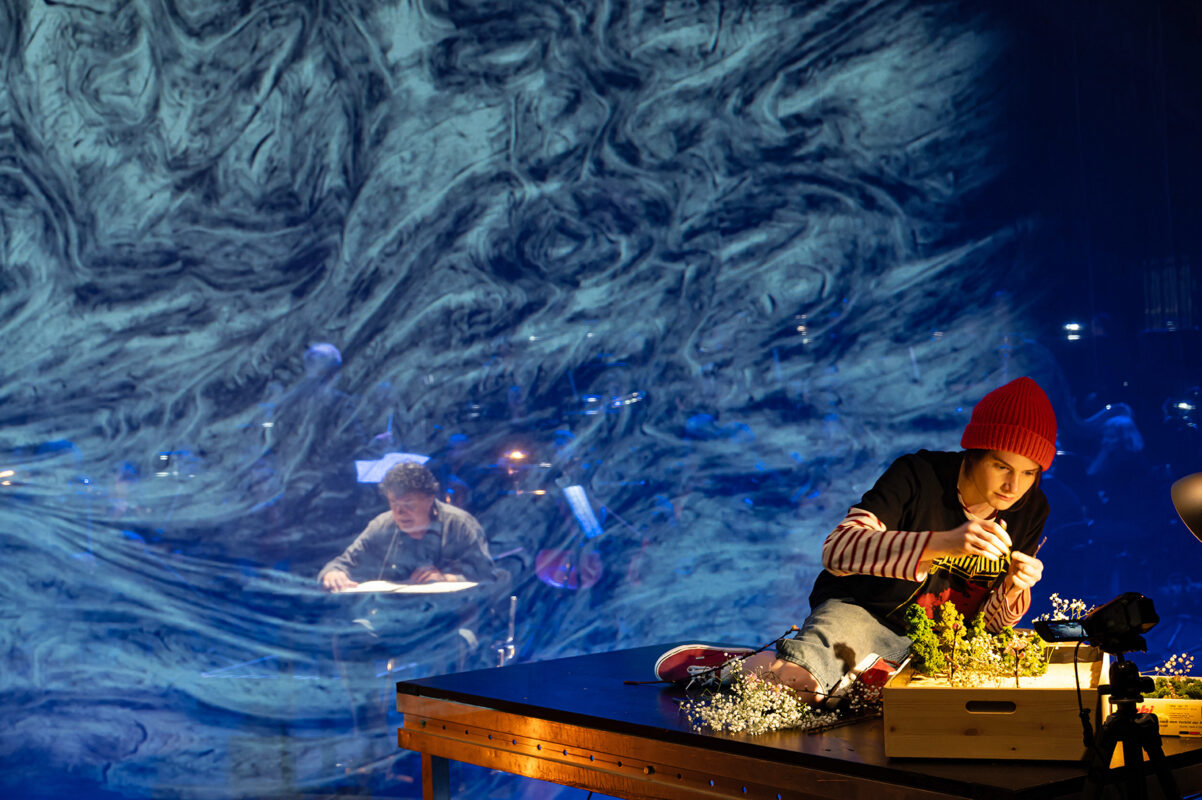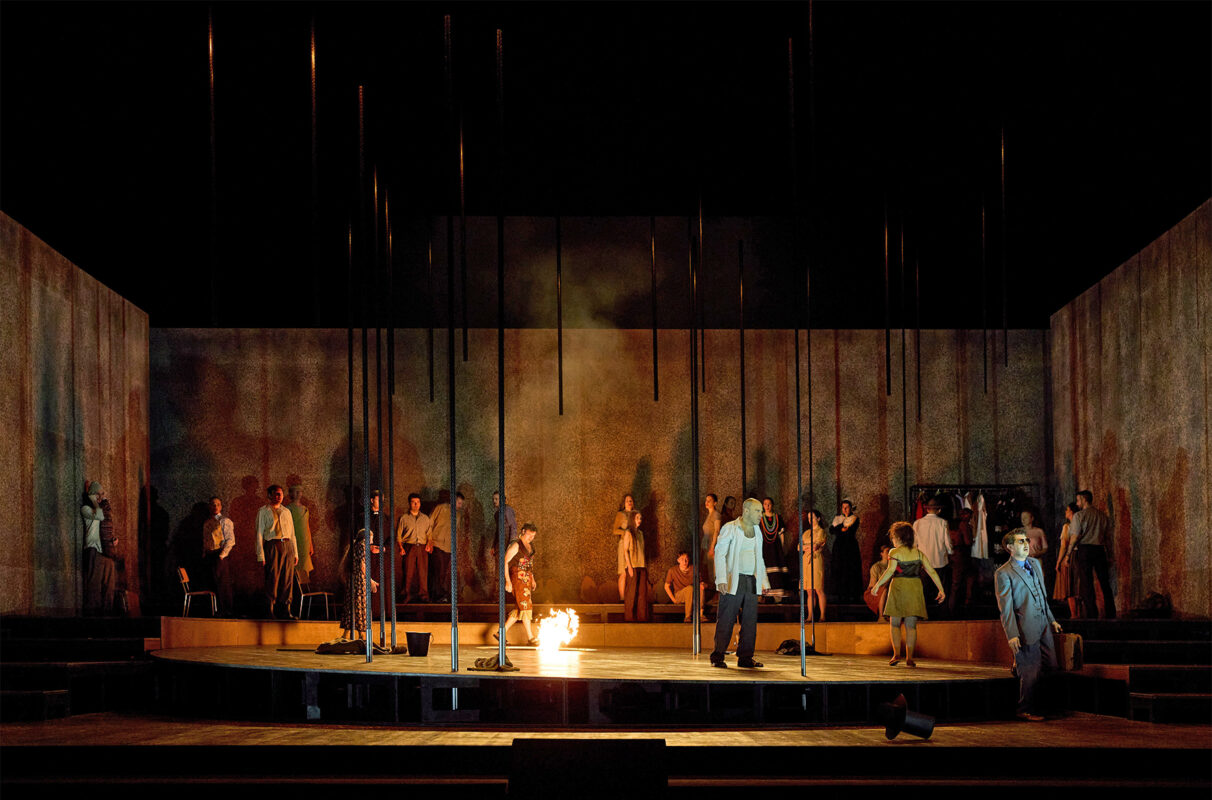A stroke of luck for Swiss festival culture
The concert series dedicated to sacred music took place for the 15th time in Fribourg at the beginning of July. The program featured music with religious roots from different eras and cultures.

classical music festivals with a coherent program concept, a tangible local
rehearsal work and the connection to the region and the performance space, do they still exist? In today's festival euphoria, which is geared more towards mass appeal than such criteria or artistic processes, the question is justified. We are often served standardized programmes that use sounding names to disguise a lack of artistic concept.
However, there are classical music festivals that convey vitality through thematic limitation and competent programming. In addition to the Fribourg Festival, these include the Zurich Early Music Forum and the Basel Early Music Festival. The latter offers various events throughout the year in addition to the festival. While the Zurich festival covers a wide stylistic range with music from Gregorian chant to the 19th century, the Basel Festival is committed to promoting Basel graduates in the field of early music. With its focus on the central turning points of early music (last year it was the transition from the "prima pratica" to the "seconda pratica") and additional thematically related symposia, this festival is also very stimulating academically.
The Fribourg Festival International de Musiqes Sacrées is a stroke of luck. An almost popular openness gives it a personal character. The program features music that is open to different epochs and religious roots and often leads to immediate emotion. Profane and sacred, instrumental and vocal, Western and Oriental are effortlessly combined - this becomes particularly impressive if you attend all the concerts. For example, the Sufi maquâms are reminiscent of Neapolitan love songs, or the Andalusian Middle Ages meet baroque Catholicism.
-

- Photo: zVg
- Paul van Nevel
Ideal space for voice architecture
The 15th Biennale took place in the week from July 5 to 12. With 14 concerts (two concerts per day), an atelier for Gregorian chant and a composition competition (this year's winner is Takahiro Sakuma with Asteroid Belt) offers a sophisticated program, with the Eglise du Collège Saint-Michel being part of the secret recipe. You could almost hear a feather drop in the perfectly proportioned baroque church. Here are four concerts to give you an impression of the exciting week.
In terms of choice of works, vocal transparency and vocal quality, the concert made a great impression. Eton Choirbook of the Belgian Huelgas Ensemble under the direction of Paul van Nevel made the greatest impression on me. From the rich collection of these works, which have miraculously survived into Anglicism, van Nevel selects five- to nine-part text settings dedicated to the Mother of God. The harmonic richness of the works by Sutton, Horewud, Sturton, Browne and Wylkynson is incredible. What a discrepancy between this delicate music and the intrigues of Henry the Eighth! The Huelgas ensemble sheds light on the architecture of the works and shows how the scoring stretches the conventional framework, how the voice imitations break like waves in daring harmonies, and also how the final phrases dissolve almost polytonally and the meandering registration takes on a life of its own. While in Johannes Sutton's Salute Regina the drama is heightened until the end and in the last lines the voices slide into an almost tearing tension, Edmundus Sturton's sublime flow of sound in Gaude Virgo Mater any sense of time. Music that leads melodically and harmonically to extremes, yet remains true to the constant pulsation, a vaporous flow. In Johannes Browne's Stabat mater dolorosa dynamics and rhythmic impulsiveness come to the fore. The almost overflowing melismatic ramifications are sung with ease by the Huelgas ensemble, even in the extreme treble. The relief-like voice leading emphasizes the contrapuntal depth of these Marian chants.
Catholicism, Sufism and popularism
Pino de Vittorio's explorations of Apulian piety seem almost naïve in comparison to this complex polyphony, but as a baroque contrast they are refreshing. Particularly in the anonymous songs and dances, in which he accompanies himself on the guitar, Pino de Vittorio demonstrates agogic vitality, communicative presence and rhetorical talent, although this does not conceal vocal weaknesses. His tenor voice is not very sustainable and his intonation is often uncertain. In Rocco Greco's symphonies, on the other hand, Rebecca Ferri (cello) and Patrizia Varone (harpsichord/organ) show pearls of matching sensitivity.
The concerto by the French-Moroccan ensemble Al-Adwâr is divided into two parts, which are not always easy to distinguish due to their improvisational structure. The concert begins with the eponymous Maqâm d'amoura composition by Aïcha Redouane (vocals and qânun) and Habib Yammine (vocals, riqq and daff), and ends with selected poems from the classical Nahda school, whose texts illustrate the elegance, openness and tolerance of the Sufi philosophy of life. It is a heterophonic and rhythmic music that transports mood changes from melancholy and exuberant joy to philosophical serenity through its wealth of Arabic ornamentation. Redouane's touching voice makes the verses about the synthesis of opposites at least emotionally comprehensible in their timeless message.
The concert by the Norwegian vocal sextet Nordic Voices is a special encounter, combining 16th century vocal polyphony (Clemens non Papa, Pierre de Manchicourt, Christobal Morales) with various interpretations of the Christmas mystery. The vocal sextet impresses with its beautiful voices, vitality and sense of musical gesture. In their elaborate choral sound, Arvo Pärt's Magnificat any kind of sedateness. The world premiere of O Magnum Mysterium by Swiss composer René Oberson, a work commissioned by the festival, which builds up various elements of compositional technique into a dynamic, finely tuned harmony. Henrik Ødegaard works with folkloristic elements in his more radical version. The composition, interspersed with primal screams, overtone singing and Steve Reich minimalism, is not lacking in immediate effects that refreshingly transform the mystery of the birth of God into loud cheerfulness. Lasse Thoresen's Solbøn begins with the second interval, dark and restful. It is impressive how the Norwegian ensemble uses a rich palette of moods and vocal techniques, oscillating between the vocal and instrumental, as it were. Falsetto, yodeling and whooping give the sun song an intense radiance.
The 16th edition of the Festival International de Musiqes Sacrées will take place in two years' time. It is to be hoped that this biennial, which has existed since 1986 and is masterfully directed by Pierre Tercier, will remain true to its self-confident attitude. It offers a valuable forum for dialog, for the preservation and renewal of sacred music.








